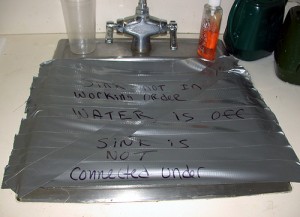Phil Isenberg, California water’s self-described “grumpy old guy”, put down a marker today with a particularly useful, nuanced take (pdf) take on this week’s Bay-Delta Conservation Plan announcement, arguing that it is a bigger deal than some of us have been willing to acknowledge.

Phil Isenberg
“Serious public policy people should pay attention,” Isenberg wrote.
As I’ve written before, the Delta is a hairball of a wicked problem. Isenberg sketches what seems to be a solution space he sees taking shape in the proposal announced Wednesday for a tunnel beneath the Delta to carry water from north to south.
Isenberg is one of the most savvy politicians I’ve ever had the pleasure to meet. I mean “politician” here in the best sense of the word, with politics being the noble means by which we settle conflicts among competing societal values. Isenberg’s job as head of the Delta Stewardship Council is to do just that. Given that political skill, however, what I don’t know is whether Phil is describing here what he actually thinks is happening in the BDCP, or whether he is trying to frame things in a way he hopes they will happen. Probably a bit of both.
In particular, Isenberg finds it significant that the scheme laid out yesterday includes no guarantees for how much water the exporters (San Joaquin Valley farmers and water-using cities in the Bay Area and Southern California) will be able to extract from the system in the long run:
Absolute guarantees of endless amount of ‘new water’ are slipping from the discussion. This may be the most interesting part of the BDCP announcement. For the entire history of California, people have demanded legal guarantees of water supplies (we also call them “assurances,” or “entitlements”). But if you read all the documents presented this week, it clear that water contractors are not asking BDCP to guarantee a set amount water will be provided – not even a “minimum amount” to be exported (see the Questions and Answers on page 3). Rumbles have circulated through the water world for many weeks that “guarantees are no longer a pre-condition for BDCP approval.” That was so peculiar that many of us thought it could not be true.
I don’t read the “Questions and Answers on page 3” (pdf) as being quite as firm as Phil would suggest:
Our package of recommendations does not currently address any specific guarantees of minimum water exports. Whether and how to shape these “assurances” must await further environmental and cost analyses which will be forthcoming in the reviews currently underway.
That seems to me to leave an opening for guarantees down the road. But maybe this is an example of Phil, the savvy politician, trying to frame the discussion in a useful way?
The related point is that “Science will now guide how to best restore the ecosystem and how much water can be exported.”
This declaration breaks new ground. Not by saying that science should be involved, but by saying that science will guide water operations as well.
Isenberg argues that “this may well qualify as a major change in how California deals with water supply and demand”:
Historically, we have overpromised the total amount of water to be delivered. That was not a big problem when California’s population and economy were small and the supply of water ample. Today, our population and economy is very large and the supply of water has remained static. The tension is also greater because of strong public supports for reversing the environmental damage from previous water development.
Is dropping the demand for guaranteed levels of water a way to talk honestly about supply and demand? I sure hope so. The Delta Stewardship Council has wrestled with this problem, and ultimately decided that the best way to say it “matches the demands for water to the available supply – not the other way around.” The announcement this week sounds very much like this approach.
If you’re interested in sussing out what is happening with BDCP, I recommend reading the whole thing.



